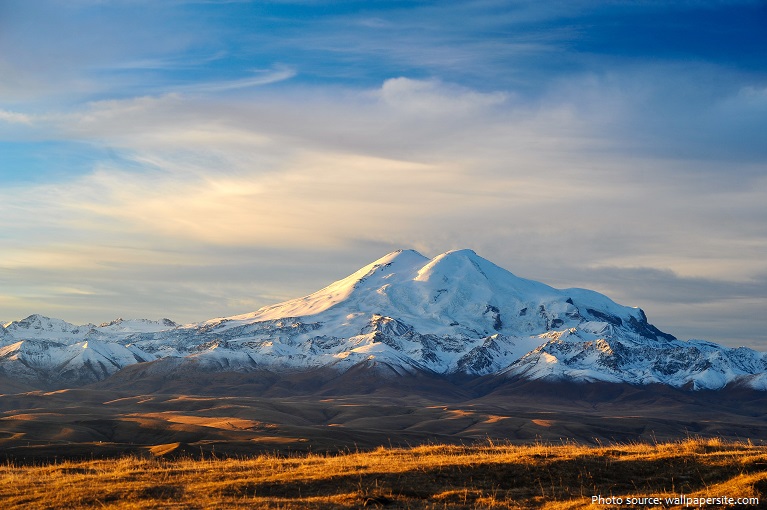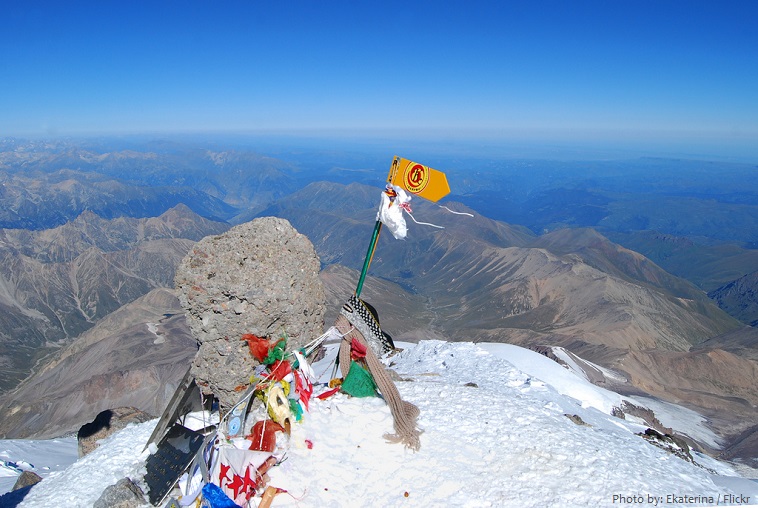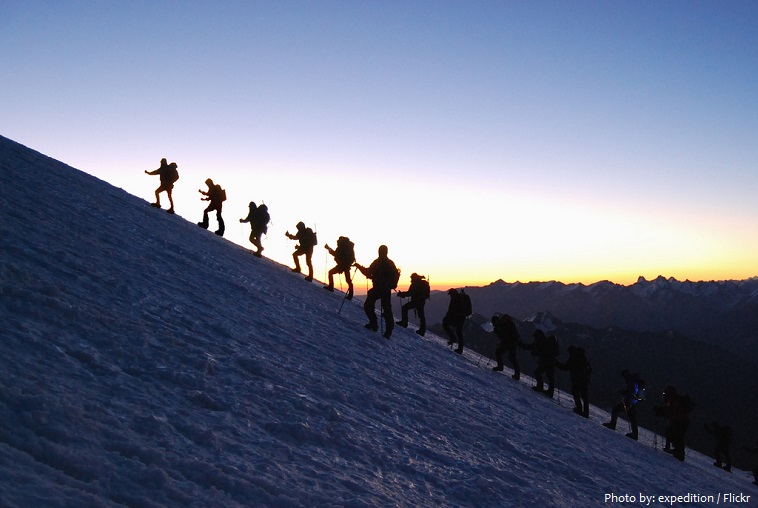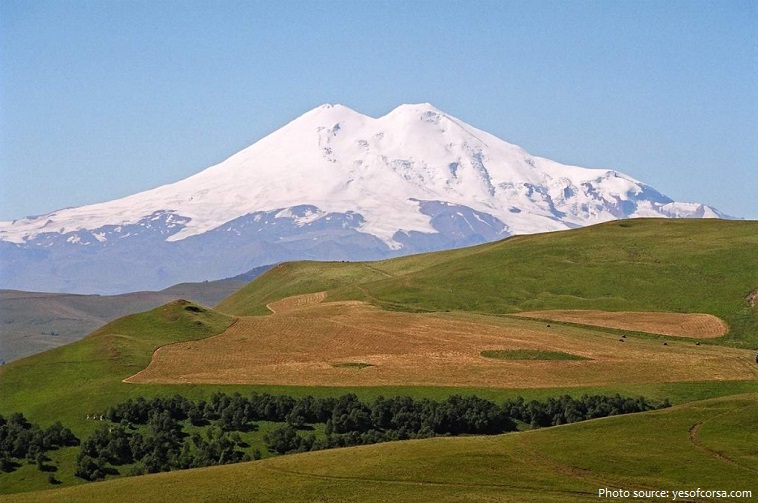Mount Elbrus is the highest mountain in Europe and the tenth most prominent peak in the world.
It is located in the Caucasus Mountains in Southern Russia, near the border with Georgia.
Mount Elbrus is a dormant volcano and was formed more than 2.5 million years ago.
Elbrus has two summits: the taller west summit is 5,642 meters (18,510 feet), the east summit is 5,621 meters (18,442 feet).
The east summit was first ascended in 1829 by Khillar Khachirov a guide for a Russian army scientific expedition.
The west summit was first ascended in 1874 by a British expedition led by F. Crauford Grove and including Frederick Gardner, Horace Walker, and the Swiss guide Peter Knubel of St. Niklaus.
Mount Elbrus is the fifth highest of the Seven Summits (the highest peaks of the 7 continents).
A total area of 138 square kilometers (53 square miles) of Elbrus is covered by 22 glaciers, which feed the Kuban River and some of the headwaters of the Terek.
Elbrus is a major center for mountaineering and tourism in the Caucasus region. In 1964 an extensive tourist and mountaineering base was opened, with large-scale sporting facilities.
From 1959 through 1976, a cable car system was built in stages which can take visitors as high as 3,800 meters (12,470 feet).
There are a wide variety of routes up the mountain, but the normal route, which is free of crevasses, continues more or less straight up the slope from the end of the cable car system.
The most dangerous aspect of climbing Mount Elbrus is the weather, as storms can occur suddenly, bringing extremely cold weather and wind.
During the summer, it is not uncommon for 100 people to be attempting the summit via this route each day.
During the early years of the Soviet Union, mountaineering became a popular sport of the populace, and there was tremendous traffic on the mountain.
Since 1986, Elbrus has been incorporated into Prielbrusye National Park, one of the Protected areas of Russia.
The first race on Elbrus took place in 1990. The Soviet climbers competed against Americans climbers. The race was won by Anatoli Boukreev, with Kevin Cooney in second, followed by Patrick Healy. Route Priut 11 (4050 m) – East (lower) was summited in 1 hour and 47 minutes.
In 1997 a team led by the Russian mountaineer Alexander Abramov took a Land Rover Defender to the summit of the East Peak, breaking into the Guinness Book of Records. The project took 45 days in total.
In 2016, Russian climbers Artyom Kuimov and Sergey Baranov entered the Guinness Book of World Records by reaching the summit of Elbrus on all-terrain vehicles.
The name Elbrusis a metathesis of Alborz, which is also the name of a long mountain range in northern Iran. It is derived from Avestan Harā Bərəzaitī, which is a legendary mountain in Persian mythology.
The ancients knew the mountain as Strobilus, Latin for “pine cone”, a direct loan from the ancient Greek strobilos, meaning ‘a twisted object’ – a long established botanical term that describes the shape of the volcano’s summit.
Mount Elbrus is perhaps best known through Greek mythology. Prometheus, the archetypal trickster and champion against oppression, had stolen fire from Zeus to give to mankind. Zeus tied him to Mount Elbrus as punishment and sent a long-winged eagle to eat his liver, but Herekles, the great bastion of masculinity, freed him and killed the eagle.
Elbrus was active in the Holocene, and according to the Global Volcanism Program, the last eruption took place about AD 50.
There are some signs of activity on the volcano, including solfataric activity and hot springs. The western summit has a well-preserved volcanic crater about 250 meters (820 feet) in diameter.




Comments are closed.